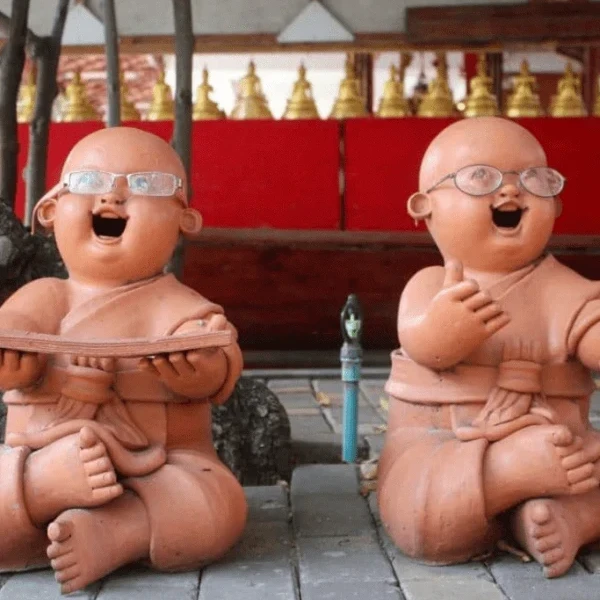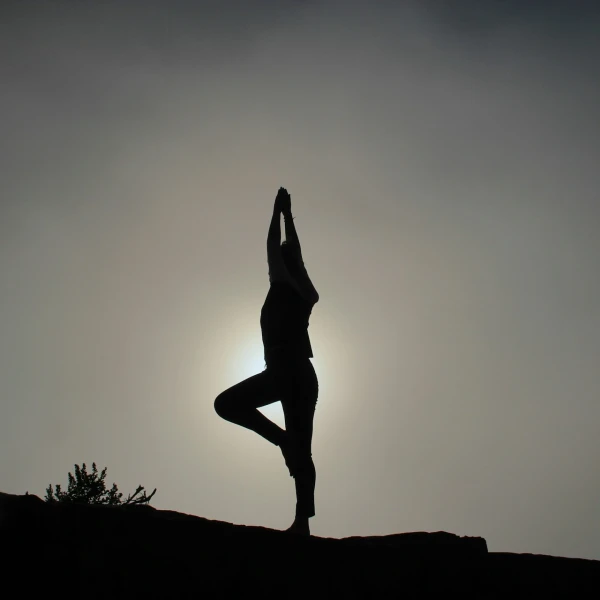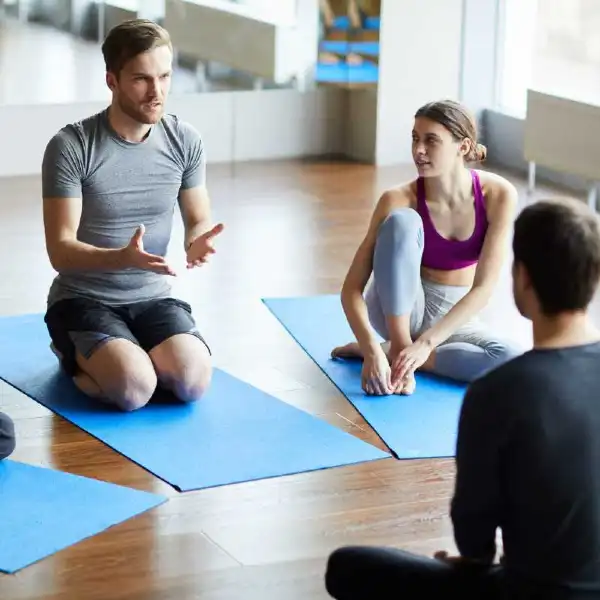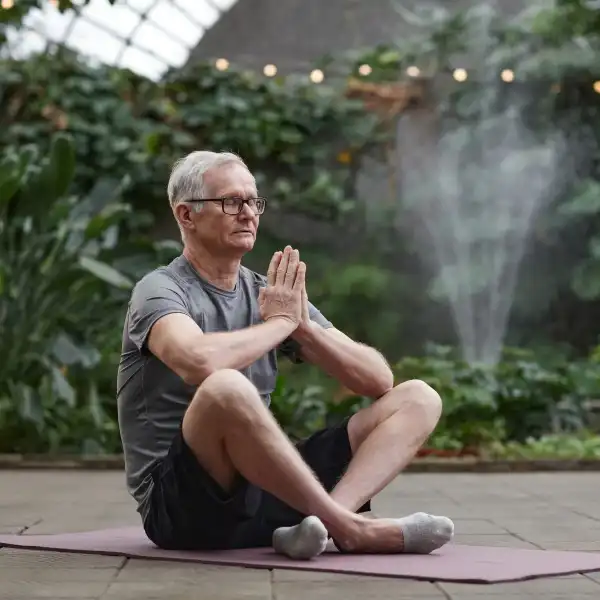They say laughter is an infectious disease and that everybody should catch it. Happy people, they also say, have stronger immune systems. They are less likely to catch a cold, are 50% more likely to produce antibodies in response to flu vaccines, and are less likely to have cardiovascular disease as well. So what does this tell us? Laughter is indeed the best medicine that is free for all. But we want to harness the power of laughter and bring it in to our daily health regimen. And how do we do that?
Enter Laughter Yoga.
In a December edition of the Daily Tarheel, writer Olivia Ross gave us a glimpse into the laughter yoga class of Liza Engstrom where participants leave their mats at home but still take part in traditional yoga components such as stretching and meditation.
There’s just lots of laughter sprinkled in between.
Engstrom discovered laughter yoga while living in Mexico, an influence you can see in her current N.C. class (between exercises her students chant “Muy Bien! Muy Bien!” while clapping and performing hand gestures).
But What Exactly Is Laughter Yoga?
Laughter yoga is a combination of deep breathing and laughter exercises. It was founded on March 13, 1995 by Dr. Madan Kataria who is a medical doctor in Mumbai, India which he called Laughter Club at a Park. The attendees were but a few people.
But now, members come from all over the world. It is present in 65 countries and is known to have thousands of members belonging to Social Laughter clubs worldwide. But this fun form of yoga doesn’t just happen in these so-called social clubs.
Corporations and companies are finding the possibility of happiness in the workplace and started inviting laughter yoga coaches to conduct the class for them. Even students can take advantage of its health benefits as it can be done in schools, universities, and colleges that want to relieve the stress off their tired students. Yoga studios and fitness centers also offer these classes to whoever wants to participate.
The medical field is also finding the benefits of laughter yoga to cancer patients and physically and mentally challenged individuals looking for better, more organic alternatives to synthetic medicines, or to provide palliative care.
It’s about cultivating laughter and consciously laughing. As Engstrom puts it, there is a connection with the breath. Laughter is just a way to facilitate deep breathing.
It’s a happy exercise anyone can do.
How Does Laughter Yoga Benefit Me?
Studies show that it doesn’t even matter if the laughter is real or fake. Since the body cannot tell the difference, then it can provide the physiological and psychological benefits all the same. So what good does laughter yoga really bring to the table?
Heart Health, Reduced Blood Pressure

A research commissioned by Laughter Yoga International in December 2006 showed that among 200 IT experts who participated, those in the laughter yoga group experienced a decrease in heart rate and blood pressure.
Lower Stress Levels

The study mentioned above also found that these participants had a significant drop in the secretion of stress hormones like cortisol and epinephrine in the blood. Laughing helps the body get more oxygen in the brain which gets delivered throughout the entire body for better functioning.
Improves Mood and Gives Positive Outlook

Laughter releases happy hormones called endorphins that bring you to a good mood and a cheerful mindset throughout the day. In the study performed on the IT professionals, their laughter yoga participants showed a significant increase of positive emotions.
Strengthens the Immune System

Laughter brings your body to a sunnier mindset which allows your immune system to heal and become stronger. What it means? Better defence against harmful viruses and disease and a faster healing of chronic health conditions.
Increases Workplace Efficiency

A small study did a survey on employees who participated in a 15-minute session that ran for 15 days. Researchers found that purposeful laughter can enhance their morale, resilience, and personal efficacy beliefs. Participants were revisited for a follow-up interview, and they found that they were able to sustain their optimism, self-regulation, and positive emotions throughout. No wonder many companies look to laughter yoga for a team building event!
What Does a Typical Laughter Yoga Session Look Like?
Compared to the usual quiet, meditative environment, you’ll find yourself in a room full of people beaming and laughing for no reason. It might look like an insane asylum at first, but you’ll find that there’s actually a structured class going on amidst the roaring laughter in the room. So here’s how it goes:
Warm-Up: Clapping and Chanting
The class starts with preparing the diaphragm and the rest of the body. The teacher will guide participants with a chant.
“Ho, ho, ha, ha, ha!”
During this time, participants are encouraged to dance around or speak without forming any actual words. Doing this allows participants to call their inner-child to come out and play and laugh for no reason at all in order to minimize any inhibitions they may have.
Deep Breathing and Laughter Exercise
Deep breathing and stretching follows after the child is unleashed. After participants loosen up, they are guided by instructors to multiple laughter exercises, maintaining eye contact with other participants. They will be instructed to walk around, give high-fives, talk in gibberish, and be connected with the people who are participating with them.
Cool-Down
At this point, the laughter yoga class is nearing its end. And usually, it finishes with a laughter meditation. Laughter meditation? How does one get in a meditative state while laughing?
Well, what happens is people are instructed to breathe deeply and laugh whenever they feel a chuckle coming up. There can be intervals in between, and also at the very end, where they are instructed not to laugh. Instead, they would focus on regrounding themselves, meditating to calm and lower their heartbeat and breathing until they are back to their normal state.
Recommended Laughter Yoga Poses
Laughter Yoga is probably the easiest branch of yoga there is and anybody can do it. Many instructors are taught how to teach their class and they can add twists and turns depending on their style. There are many “poses” that you can do whether you’re with another person or maybe you’re having a rough day and want to de-stress on your own. Here are a few favorites we recommend:
With a Partner/Other People

- Cell phone laughter: Hold an imaginary cell phone against your ear and laugh at it. You can talk to it, make funny gestures, or pass it to another participant.
- Greeting laughter: Greet another participant with the language of laughter. No words. Just laugh.
- Hearty laughter: Look up with your hands stretched skyward and laugh as if the laughter is coming from your heart.
- Gradient laughter: Smile. Then chuckle. Then laugh a little bit louder, louder, and louder until you reach a loudest and largest laughter you can possibly muster, and then do it again in reverse order until you’re back to you smiling face.
On Your Own

- Laughter cream: Take an imaginary jar or tube of cream and rub it on your legs, hands, arms, face, all over your body while laughing as you go through each body part.
- Electric Bill laughter: Read an imaginary electric bill and laugh as you see what’s in it.
- Argument laughter: Get your anger out with laughter.
- I don’t know why I’m laughing: Look at the mirror, or out the window, or to someone you trust who you’re sure isn’t going to think you’re crazy. Now smile, and laugh as if you’re telling yourself (or that person who isn’t going to punch you in the face) “I don’t know why I’m laughing” without any word. Use your laughter and body language to convey this message to them.
- Laughter vowels: Say the vowel sounds, but elongating them into laughter. So instead of A as in “cat”, you’ll say “Aaah ha ha ha ha”, then “Eeeh he he he he” and so on until you reach the vowel U.
In Conclusion:
Laughter Yoga is a fun and creative branch of yoga that exercises the mind and body and also has the ability to give you a positive outlook in life. It’s a great way to peel off the stresses brought about by daily life and rejuvenate your tired spirits to raise it up again and come out feeling new.
Going back to the classroom, Engstrom ends her classes with a brief meditation, which concludes with giggles as Engstrom recites an important principle of laughter yoga:
We do not laugh because we are happy. We are happy because we laugh.






